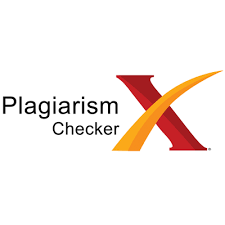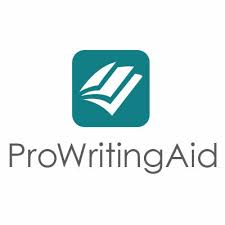MATHEMATICAL RESILIENCE AND LITERACY ABILITY THROUGH BLENDED LEARNING IN MATHEMATICS LEARNING
DOI:
https://doi.org/10.30740/jee.v6i1.179Keywords:
Mathematical Resilience, Mathematical Literacy, Blended Learning.Abstract
This research is motivated by the low ability of students' resilience and mathematical literacy which will affect their competence as a teacher. Amid the current conditions of the Covid-19 Pandemic, learning in schools, both in tertiary institutions, is constrained, so one of the right solutions at this time is the implementation of the Blended Learning learning model in learning, especially learning mathematics. Facing the current situation, we are required to be tough and strong, therefore we must have resilience skills so that students are resilient in facing any conditions. With the application of the Blended Learning model in mathematics learning, it is hoped that it can improve students' resilience and mathematical literacy abilities. The research method is a mixed method between qualitative built quantitative with a sequential exploratory strategy. The research instruments used were resilience questionnaire sheets and mathematical literacy test questions. The research procedure begins with qualitative data collection and then builds toward quantitative, the results of which will then be interpreted. The results showed that there was an increase in the ability of mathematical resilience and literacy using Blended Learning with a percentage of 31% and 59% respectively.
References
Arends, R. (2008). Learning to Teach. Yogyakarta: Pustaka Belajar.
Arianingsih, L. C., Meifiani, N. I., dan Apriyani, D. C. N. (2020). Hubungan antara Literasi Matematika dengan Kemampuan Berpikir Kreatif Matematik Siswa Kelas VIII SMP Negeri 1 Arjosari. Respository STKIP PGRI Pacitan.
Asih, K. S., dkk. (2019). Resiliensi Matematis pada Pembelajaran Discovery Learning dalam Upaya Meningkatkan Komunikasi Matematika. PRISMA, Prosiding Seminar Nasional Matematika, PRISMA 2 (2019): 862-868.
Bruner, J. (1977). The Process of Education. Harvard University Press.
Comey. W. L. (2009). Blended Learning and the Classroom Environment: A Comparative Analysis of Students’ Perception of the Classroom Environment across Community College Courses Taught in Traditional Face-to-face, Online and Blended Methods. (Disertation). The Faculty of The Graduate School of Education and Human Development of The George Washington University in partial fulfillment of the requirements for the degree of Doctor of Education.
Creswell, J. W., & Plano, C. V. (2014). Designing and Conducting Mixed Methods Research. Thousand Oaks: Sage Publication.
Darma, I. K., dkk. (2020). Blended Learning, Inovasi Strategi Pembelajaran Matematika di Era Revolusi Industri 4.0 Bagi Pendidikan Tinggi. PRISMA, Prosiding Seminar Nasional Matematika, PRISMA 3 (2020): 527-539.
Discoll, M. (2002). Blended Learning:Let’s Get Beyond the Hype.
Draft Mathematics Framework. (2013). https://www.oecd.org/pisa.
Draft Mathematics Framework 2021.
Fathani, A. H. (2013). Gaya Belajar Siswa dalam Menyelesaikan Masalah Matematik Ditinjau dari Tingkat Kecenderungan Kecerdasan Matematik dan Linguistik. Prosiding Seminar Nasional Matematika dan Pendidikan Matematika, 18 Mei 2013. Malang: UIN Malang.
Gardner, H. (1998). Multiple Intelligences: The Theory in Practice. New York: BasicBooks.
Graham, C. R. (2005). Blended Learning System. Definisi, Current, and Future Directions. dalam The Hand Book of Blended Learning.
Haughey, M. and Anderson,T. (1998). Networked Learning. The Pedagogy of The Internet. Montreal: Mc Graw-Hill.
Hidayati, dkk., (2020). Literasi Matematika Calon Guru Sekolah Dasar dalam Menyelesaikan Masalah Pisa Konten Shape and Space. Jurnal Pembelajaran Matematika Inovatif Volume 3, No. 3, Mei 2020.
Husamah. (2014). Pembelajaran Bauran (Blended Learning). Jakarta: Prestasi Pustaka Raya.
Hutauruk, A. J. B., dan Naibaho, T. (2020). Indikator Pembentuk Resiliensi Matematis Mahasiswa Prodi Pendidikan Matematika FKIP. SEPREN: Journal of Mathematics Education and Applied. Vol. 01, No.02, 78-91.
Jasmine, J. (2007). Professional’s Guide: Teaching with Multiple Intelligences. Terjemahan oleh Purwanto (Panduan Praktis Mengajar Berbasis Multiple Intelligences). Bandung: Nuansa.
Johar, R. (2012). “Domain Soal PISA untuk Literasi matematisaâ€. Jurnal Peluang, Volume 1, Nomor 1, Oktober.
Koohang, A. (2009) A Learner-Centered Model for Blended Learning Design. International Journal of Innovation and Learning, 6(1), 76–91.
Krathwolh, D. R. (2002). A Revision of Bloom’s Taxonomy: An Overview Theory into Practice. Autum. Vol.41, No.4.
Mahdiansyah dan Rahmawati. (2014). “Literasi matematisa Siswa Jenjang Pendidikan Menengah: Analisis Menggunakan Desain Tes Internasional dengan Konteks Indonesiaâ€. Jurnal Pendidikan dan Kebudayaan. 20(4).
Maryanti. (2012). Peningkatan Literasi matematisa Peserta didik Melalui Pendekatan Metacognitive Guidance. Bandung: Universitas Pendidikan Indonesia.
Mufidah, N. L., & Surjanti, J. (2021). Efektivitas Model Pembelajaran Blended Learning dalam Meningkatkan Kemandirian dan Hasil Belajar Peserta Didik pada Masa Pandemi Covid-19. Ekuitas: Jurnal Pendidikan Ekonomi, 9(1), 187-198.
Murni, V., dkk. (2021). Hubungan Antara Minat Belajar Dengan Resiliensi Matematis Pada Masa Pandemi COVID-19. Jurnal Cendekia: Jurnal Pendidikan Matematika Volume 05, No. 02, Juli 2021, pp. 1147-1158.
Nasution, N., dkk. (2019). Buku Model Blended Learning. Pekanbaru: Unilak Press.
OECD. (2010). (2009). Matemathics Framework. Paris: PISA, OECD Publishing.
OECD. (2021). (2010). (2009). Matemathics Framework. Paris: PISA, OECD Publishing.
OECD (2009); OECD (2010); Staecy (2011); nces.ed.gov/timss/pdf/naep_timss_pisa_comp.pdf.
Peraturan Menteri Pendidikan Nasional Nomor 22 Tahun 2006 tentang Standar Isi untuk Satuan Pendidikan Dasar dan Menengah.
Piaget, J. (1965). The Origins of Intelligence in Children. New York: International University Press Inc.
Poespoprodjo, W. (2011). Logika Ilmu Nalar. Bandung: Pustaka Grafika.
Ramsay. (2001). Teaching and Learning With Information and Communication Tecnology: Succes Through a Whole School.
Rahmatiya, R., dan Miatun, A. (2020). Analisis Kemampuan Pemecahan Masalah Matematis Ditinjau dari Resiliensi Matematis Siswa SMP. Teorema: Teori dan Riset Matematika, 5(2), 187–202.
Rifai’i, A., dan Catharina, T. A. (2009). Psikologi Pendidikan. Semarang: Unnes Press.
Rusman. (2012). Belajar dan Pembelajarn Berbasis Komputer (Mengembangkan Profesionalisme Guru Abad 21). Bandung. Penerbit Alfabeta.
Sari, Rosalia Hera Novita. (2015). Literasi matematisa: Apa, Mengapa, dan Bagaimana. Seminar Nasional Matematika dan Pendidikan Matematika. Yogyakarta: Universitas Negeri Yogyakarta.
Setiawan, R. dkk. (2019). Efektivitas Blended Learning dalam Inovasi Pendidikan Era Industri 4.0 pada Mata Kuliah Teori Tes Klasik. Jurnal Inovasi Teknologi Pendidikan, Volume 6, No. 2, Oktober 2019 (148-157).
Susilawati, dkk., (2021). Pembelajaran Terintegrasi STEM Uuntuk Meningkatkan Literasi Matematis Mahasiswa Calon Guru Matematika pada Perkuliahan Pra-Kalkulus 1. Teorema: Teori Dan Riset Matematika, 6(1), 82–97, Maret 2021.









